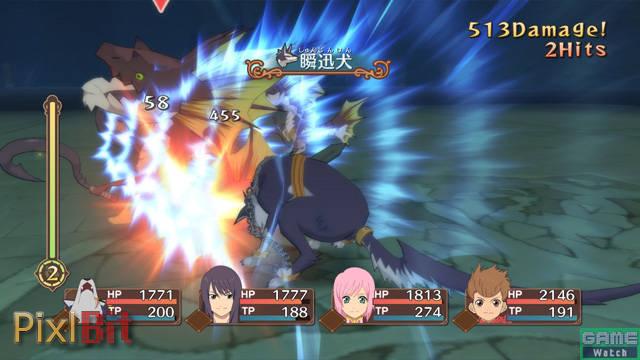Good feature. I like all of these games and battle systems except Panzer Dragoon. I would love to play it, but will have to wait until it gets re-released, if ever. Tales games have my favorite overall, which is one reason the Tales franchise has become my favorite jrpg series. If I had to pick my favorite, it would have to be Graces or Xillia. I also like Shadow Hearts. It was a traditional turn-based series, but the ring meant you had to pay attention. Another favorite, though I realize I am probably alone, is FFXII. I loved the customization of the party's ai. As long as you don't set gambits for the character you are playing, you are always busy in a battle.
Love the System: Our Favorite RPG Battle Systems
Can't get enough of these fights.
Tales of Vesperia
by Jon Lewis
Those who know me know that I have a thing for fighting games. Something about practicing and executing combos just tickles my fancy. It’s satisfying, flashy, and requires an amount of dedication and skill that makes me feel really good about actually putting in the time.
This is why the Tales series has always stuck out to me in terms of the battle system. The Tales series uses combat known as LMBS, (pronounced “limbs”) which stands for Linear Motion Battle System. In it, characters are locked in a two-dimensional plane with the enemy, and can engage the enemy in real time, as opposed to taking turns. In earlier games in the franchise like Tales of Phantasia and Tales of Destiny, battles took place on a 2D plane exclusively. When Tales of Symphonia came out, battles began to take place on a 3D battlefield, yet characters were still locked on a plane with the enemy. Tales of the Abyss evolved the system even more, letting characters free run for the first time and giving players a chance to move unconstrained in battle. However, when engaged with an enemy, the linear lock on remains, which kept the legacy intact while modernizing it and optimizing the fun factor.

As I said before, battles in the Tales series take place in real time. Characters have basic attacks, which can be followed up with special attacks which are now known as Artes (formerly known as Tech). These moves require TP, and are special moves that can be chained together to form combos. Earlier games in the series didn’t emphasize combos as much, but as the series evolved, the idea of linking attacks was expanded upon. This became one of the stand-out features for the series as a whole.
My favorite implementation of these ideas came in 2008’s Tales of Vesperia for the Xbox 360 (and also PS3 in Japan, circa 2010).
Vesperia uses the Evolved Flex Range Linear Motion Battle System, which took a lot of influence from Tales of the Abyss. The system allows for long combo strings, aerial combos, and introduces new mechanics like Fatal Strikes, which are powerful critical attacks, as well as a powerful version of the series mechanic “Overlimit”.

My favorite part about the battle system is the game’s main character, Yuri Lowell. Yuri has an extremely large amount of Artes and Skills at his disposal which makes him a combat machine by the end of the game. Vesperia’s “Overlimit” system was a major component of this. While in “Overlimit”, you can freely use as many Artes in a combo as you desire as long as you have the TP to do so. However, there are four levels to this “Overlimit”. Later levels let you continue attacking without TP cost and even grant you invincibility. Couple this with a skill that gives Yuri an automatic “Overlimit” state by getting a large enough combo, and you have one of the most overpowered characters in the series.
This would be a shame if using him wasn’t so much fun. His vast amount of Artes and skills make freestyle combos something to behold. It’s not necessarily easy to gain all the skills necessary to perform the best and longest combos in the game, but put in the time and you will have the tools to combo the strongest bosses in the game to death, solo!

This isn’t to say that other characters in the game aren’t fun to use as well. Every character eventually gains powerful tools that allow them to do incredible damaging combos, especially the spell caster, Rita and the high-flying Judith.
Sure, part of the reason Tales of Vesperia is so fun is because in some ways it’s broken. To some that might be a downfall, but I can assure you that while it is a little unbalanced, it takes a lot to get that strong and enemies still hit incredibly hard. Fail completing a combo and you can eat an enemy’s Mystic Arte that will most likely kill you if you aren’t prepared.
Tales games that came after Vesperia have tried to avoid the long form combos I adore, and while the games aren’t bad by any means, none has been as fun for me as Tales of Vesperia. The only thing stopping me from executing my long standing dream to solo the EX dungeon boss is a broken disc, which leaves me a bit sad, but I still wouldn’t have minded popping in just to have fun with the system.





Comments